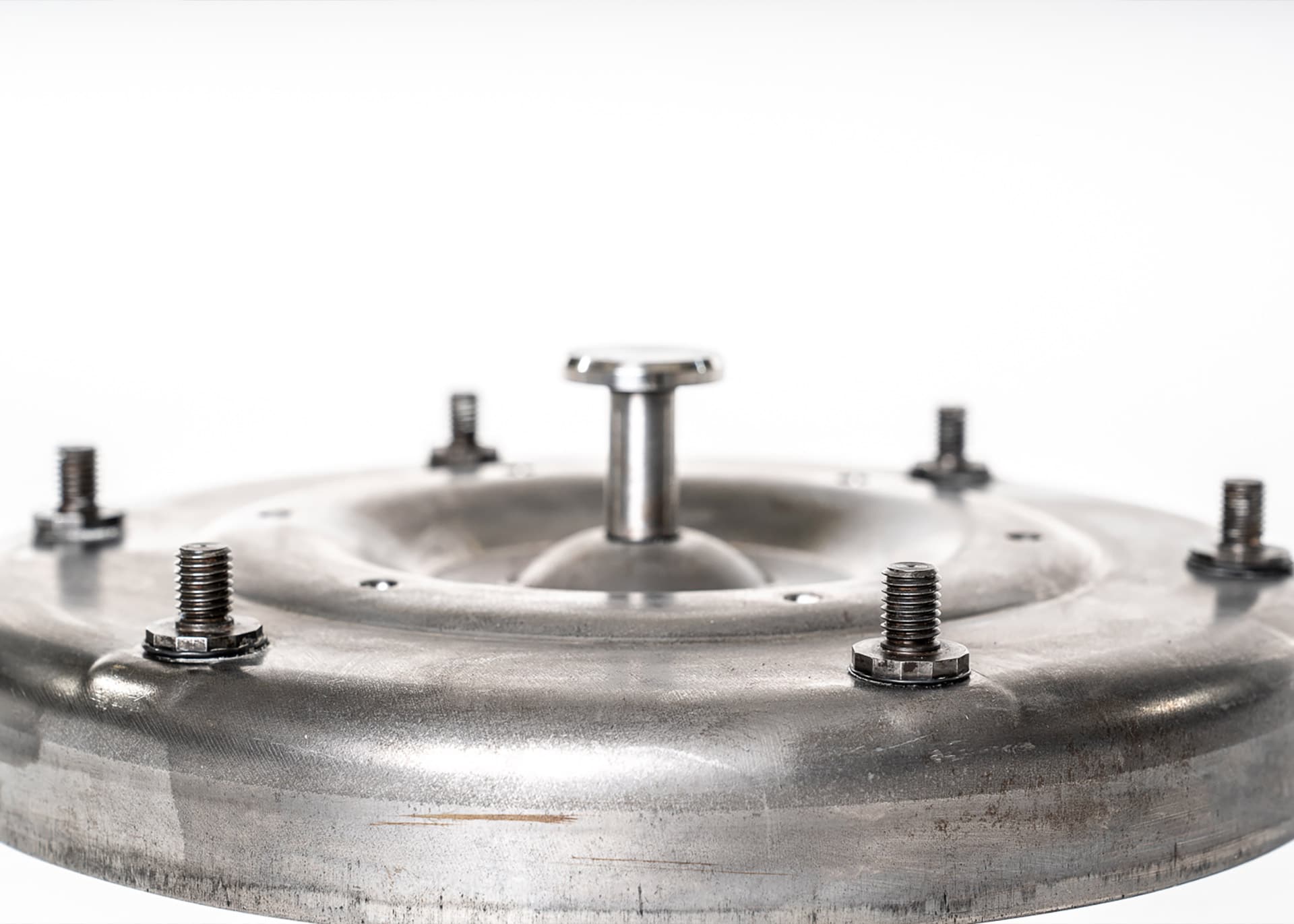Friction welding
The future begins every day
Overlapping spot weld joints – a joining principle that has been tried and tested a million times over is implemented in a new way. Two prerequisites lead to success.
Firstly, the uncompromising joint quality and process reliability through friction welding and secondly, the economical and simple joining principle through spot welding.
Two proven processes lead to a new, successful combination, friction spot welding! An unbeatable combination for welding wrought alloys. Aluminium, magnesium and mixed joints can now be joined safely and easily with friction spot welding.
New process – ingeniously simple
Rotating lifting tools heat the joining area. The material, which is heated to a high temperature in a flash, is now in a plasticisable state and can be kneaded. The tools penetrate and mix the material.
After cooling, a material bond is formed. In friction welding, the typical bonding temperature is below the melting point. Due to the low heat input and mechanical forming, a very fine-grained structure is produced in the joining zone. The properties of the base material are retained – a strong bond of exceptional quality is created.
This is how it works – the process flow
The pin and sleeve rotating tools are placed on the joint area. The resulting heat transforms the solid material into a plasticisable non-melting state. The rotating sleeve penetrates the “doughy” material. At the same time, the “inner” pin is lifted off the tool; a cavity is created. This cavity then absorbs the displaced volume. The punch lies flat on the surface of the material; the material is prevented from escaping uncontrollably. The sleeve penetrates the upper sheet and enters the lower layer.
During the return movement, the sleeve is pulled out of the joining zone. At the same time, the pin pushes the plastic material back into the joint area: The cavity fills up again. The material is fixed by briefly repositioning the tools. A cohesive, dot-shaped, level joint is achieved.
Fixed joints that are made to last
The new joint is flush with the sheet metal and leaves almost no imprint on the underside. On the welded side, the rotating tools easily form concentric rings:
“Two rings that join.” The diameter of the join is defined by the geometry of the sleeve. Spot diameters from 6 to 9mm are possible. Flush with the sheet metal, cohesive and with little effect on the base material: A joint
that is made to last!



